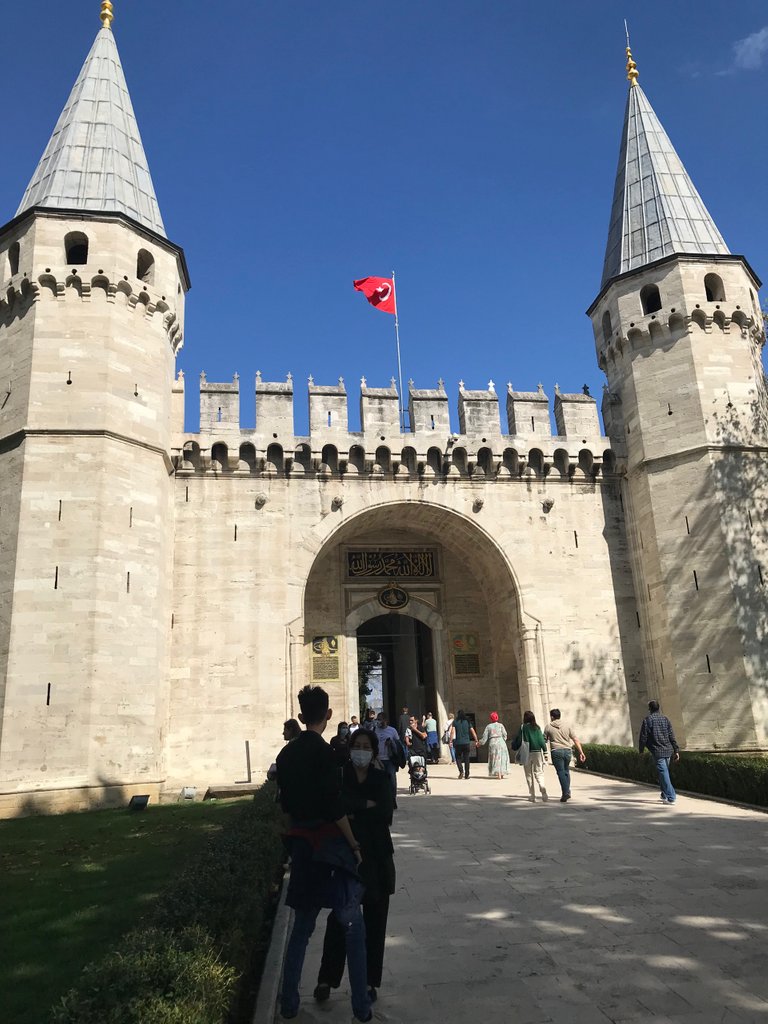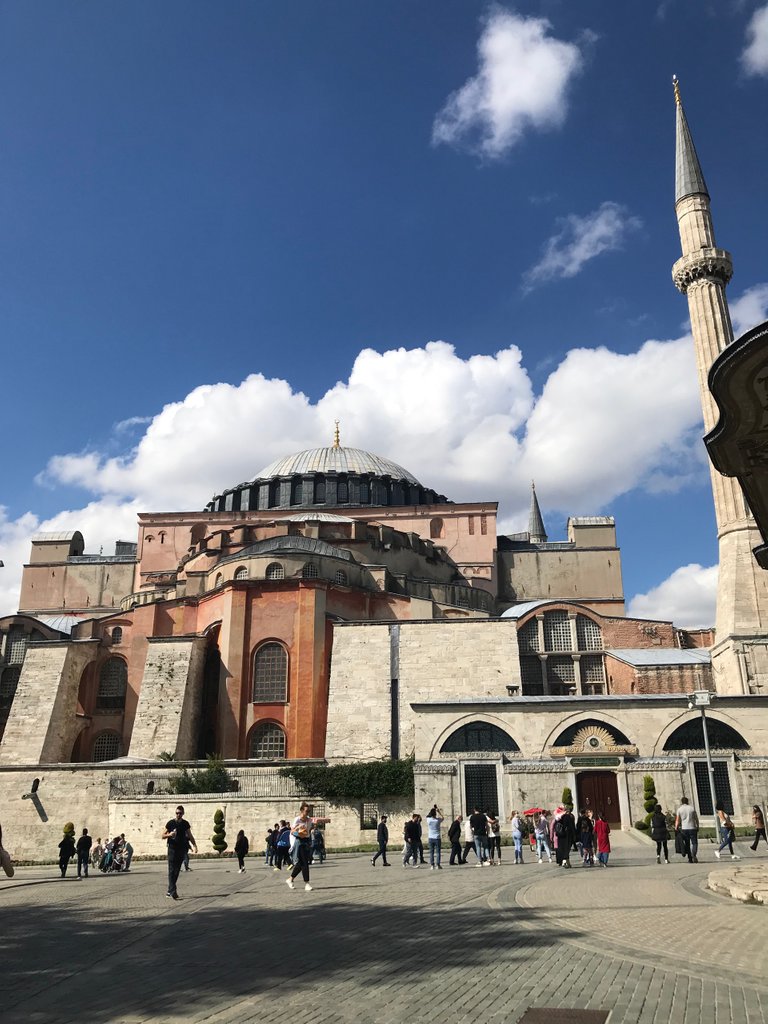As soon as I heard that lilting, reedy voice blaring out over the loudspeaker, I stopped abruptly and reached for my camera phone. I hoped I had battery left to capture this moment and then enough to navigate my way back to my hotel.
I had only been in Istanbul for one day, so I had yet to establish any sense of location or direction. Although my hotel was only a short walk away, the ancient, twisted streets of Istanbul were a maze that I was not qualified to maneuver without assistance just yet.

I had been wandering the grounds of Topkapi Palace all morning. Here, in the Sultan's seat of power, I was reveling in the grandeur of the tiled palace, ornate gardens, and breathtaking views of the Bosphorus River that runs alongside it. But once the singing began, all that quickly faded into the background.
I walked towards the source of that Call to Prayer like a beast heeding the flute of a Pied Piper. This was one of the most prominent cultural experiences I had traveled to the Ottoman capital to experience for myself, and it was happening now.
I savored the moment. 'I'm here. This is happening,' I thought to myself.
In the past, a muezzin would stand in the doorway and call to his flock. The muezzin is a Mosque official tasked with rounding up the faithful. He could also be found atop a minaret if a mosque is equipped with one. From there, he could easily project his voice out over the rooftops from that height.
The muezzin would alternate his call in each of the four points of the compass. East. West. North. And finally, South.
The Muezzin's Call to Prayer:
"Allah is most great. I testify that there is no God but Allah. I testify that Muhammad is the prophet of Allah. Come to prayer. Come to salvation. Allah is most great. There is no God but Allah."
This call - made five times each day - would elicit a steady stream of devout Muslims to approach the Mosque, remove their footwear, and enter to pray. The Call to Prayer is sung at dawn, noon, mid-afternoon, sunset, and nightfall. And the faithful enter.
I follow the source of the song along with well-manicured sidewalks that cut through an expansive courtyard. Autumn has yet to take hold here in the opening days of October, and the Istanbul sun shines warmly through bright blue skies. Beautiful trees, still full and lush, obscure the skyline making my task pleasantly difficult.
I reach what I later learn is the entrance to Hagia Irene, Constantinople's abandoned Eastern Orthodox church. Used now as a museum, Hagia Irene's understated presence lies within the Topkapi grounds. The sister to Hagia Sofia, Hagia Irene has lain primarily dormant and bereft of fanfare over the last two centuries.

Hagia Sofia
Finally, unable to go any further without scaling a wall, I see the origin of the muezzin's Call to Prayer: the Hagia Sofia itself. Formerly a church of the Eastern Roman Empire, it was converted to a mosque following the Ottoman conquest of Constantinople in 1453. Until that moment, it had stood as the largest cathedral in the world for over a thousand years.
As the Call to Prayer completes, I study the dome of the Hagia Sofia from this short distance away. Recently converted to an operating mosque from what had long been a museum, I grew excited to enter this UNESCO World Heritage site.
As it has for over fifteen hundred years, the muezzin's Call to Prayer has successfully lured the faithful. In the days to come, I, too, shall be called to enter. And enter, I shall.
Cheers!
Source: All photos and videos are the authors.
Background Material: wikipedia.org, hagiasophia.com

